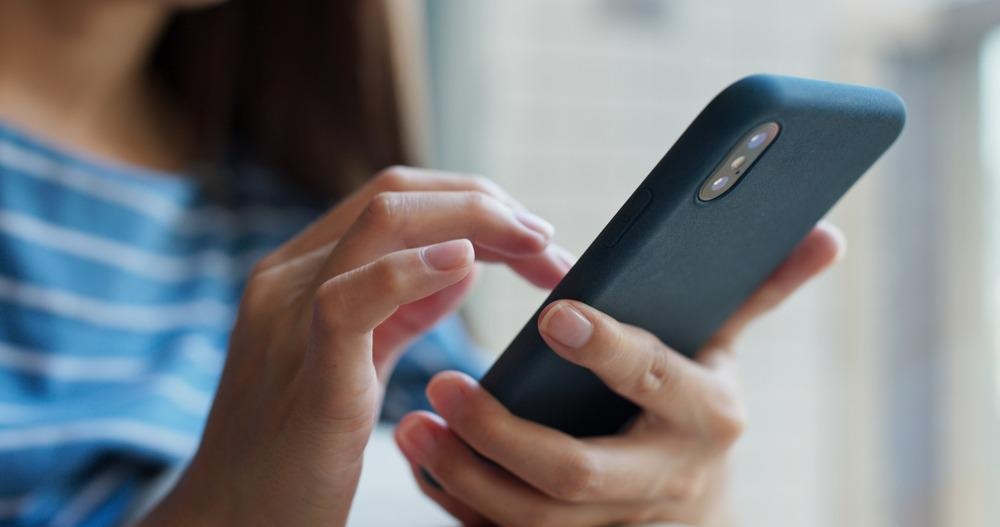In an article recently published in the journal ACS applied materials and Interfaces, the authors prepared a reusable and user-friendly transparent upconversion nanoparticles (UCNPs) strip, which was found to be sensitive to lycopene detection.

Study: Phone Camera Nano-Biosensor Using Mighty Sensitive Transparent Reusable Upconversion Paper. Image Credit: leungchopan/Shutterstock.com
Sensors Using Cutting-edge Technology
Lycopene is a natural oxidant and colorant used in the food, nutraceutical, cosmetic, pharmaceutical, and beverage industries. This expensive natural compound is derived primarily from tomatoes. The lycopene concentration controls the overall flavor due to a compound (6-methyl-5-hepten-2-one) with a high odor unit value.
Lycopene is susceptible to light, microbial degradation, and temperature, which mandates a high throughput sensing throughout the manufacturing and storage process. Among carotenoids, lycopene has the highest reactive oxygen removal rate. Its supplement is needed by the poorest consumer group in the form of soup, juice, or sauce, which increases the lycopene content in plasma by approximately 60%. Recent food industry regulations suggested labeling all the ingredients to differentiate the natural and artificial ingredients.
The cutting-edge technologies developed for metal ion identification and quantifying organic molecules are based on static/dynamic quenching mechanisms, fluorescence, absorbance energy transfer (ET), and fluorescence resonance energy transfer (FRET)/inner filter effect. Moreover, integrating machine learning with fluorescence-assisted detection aided in analyzing the curve pattern and identifying nucleotides.
Smartphone camera sensors were employed to quantify glucose, metals, antibiotics, virus, etc. Paper-based sensor platforms and fabric-based calorimetric signals are encouraged as reliable techniques. For example, thiram detection in vegetables and fruits was possible with an excellent paper-based sensor, with a detection limit as low as 60 nanomoles.
Near-infrared (NIR)-sensitive materials are devoid of background interference that have received much attention recently. Chromophore samples often show background fluorescence in visible light excitation. Thus, NIR excitation accompanied by intense fluorescence upconversion nano-biosensor paper is an immediate solution to overcome such background fluorescence and is documented by a smartphone-assisted camera.
UCNPs Strip for Lycopene Detection
In the present study, the researchers developed a transparent UCNPs strip consisting of 30 mole % ytterbium (Yb), 0.1 mole % thulium (Tm), and beta-sodium yttrium fluoride (β-NaYF4) UCNPs. This strip is transparent to lycopene detection with high precision. The method uses an overlap of lycopene absorbance with UCNPs emission, and the quantification was recorded using a smartphone camera.
Increased hydrophobicity during UCNPs addition and cellulose nanocrystal (CNC) modification allowed efficient lycopene quenching and mobility. Thus, the solvent could wash all the lycopene pockets to restore approximately 100% emission for its reuse.
Research Findings
The developed UCNPs sensor paper strip showed the luminescence quenching sensitivity with increasing concentration of lycopene under the portable laser of 980-nanometer wavelength with 450 milliwatts power. ImageJ software was used to measure the blue channel’s numerical count. In addition, the researchers tested the reusability of the sensor strips by quenching the 100 micromolar concentration of lycopene with hexane and observed the restoration of the blue channel after every wash. The hydrophobicity of the transparent paper allowed the solvent (hexane) to reach all the micropores and washed away the lycopene in the pores.
The detection limit for the transparent strip was detected with regular cellulose filter paper by dropping equal amounts of UCNPs on both the materials and testing them against lycopene. When titrating the strips by reducing the nanomolar concentration of lycopene, the transparent sensor strip’s detection limit was estimated to be ten nanomoles. In contrast, for the cellulose filter paper with UCNPs cast, the detection limit was 250 nanomoles.
The team inferred that the reduced scattering in the transparent paper improved detection and allowed maximum blue channel count to reach the camera, while the cellulose filter paper suffered from a scattering effect that limited the quenching limit of the trace undetected.
To understand the quenching mechanism, the team measured UCNP’s fluorescence lifetime and observed that after the addition of lycopene, no significant change in the lifetime was observed, confirming that the ET was static and not dynamic. They confirmed the spectral overlap between the lycopene absorbance range, UCNPs emission, and the fluorescence quenching because of the inner filter effect.
Conclusion
In summary, the researchers developed a portable UCNP sensor strip containing metal-free quenchers, integrated with a smart camera, with a 10-nanomolar detection limit. The use of nanopaper-based sensors and smartphone makes it a user-friendly technique with little to no skill requirement.
Due to the minimum scattering in the transparent paper, the UCNPs sensor strip had a high sensitivity for detection than conventional cellulose paper. Moreover, the team demonstrated the reusability of the strip by simply washing the strip and regaining approximately 100% luminescence recovery.
Reference
Kamaljit Kaur, Bandana Kumari Sahu, Kanchan Swami, Mahima Chandel, Anshika Gupta, Li-Hua Zhu, Jeffrey P. Youngblood, Selvaraju Kanagarajan, and Vijayakumar Shanmugam (2022). Phone Camera Nano-Biosensor Using Mighty Sensitive Transparent Reusable Upconversion Paper. ACS Applied Materials and Interfaces. https://pubs.acs.org/doi/abs/10.1021/acsami.2c06894
Disclaimer: The views expressed here are those of the author expressed in their private capacity and do not necessarily represent the views of AZoM.com Limited T/A AZoNetwork the owner and operator of this website. This disclaimer forms part of the Terms and conditions of use of this website.